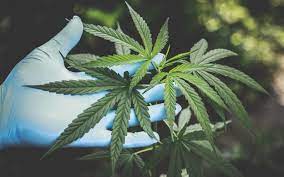A recent study led by the University of Bath in the UK highlights the heightened risks of cannabis use among adolescents compared to adults. Published in the European Archives of Psychiatry and Clinical Neuroscience, the study involved collaboration between the University of Bath, Kings College London, and University College London. It’s the first to reveal that the quantity and potency of cannabis consumed do not solely explain the increased vulnerability to cannabis use disorder in young people.
Dr. Rachel Lees, the study’s lead author, emphasized that adolescents consistently exhibited higher levels of cannabis use disorder symptoms over a 12-month period compared to adults. Cannabis use disorder symptoms include unsuccessful attempts to quit, interference with daily obligations, deteriorating mental or physical health, using in hazardous situations, and experiencing craving, tolerance, and withdrawal symptoms.
Despite most cannabis users not experiencing serious long-term harms, approximately a quarter develop cannabis use disorder, with adolescents being more susceptible. The study’s findings debunk the assumption that younger people are simply using more potent cannabis, highlighting the need for awareness among adolescents about the risks associated with cannabis use.
Dr. Lees noted that adolescents reported more negative impacts on daily functioning due to cannabis use, with a significant proportion devoting considerable time to obtaining, using, or recovering from cannabis. This lack of awareness about cannabis use disorder symptoms among adolescents, coupled with the perception of low risk, is concerning.
Experts attribute adolescents’ vulnerability to cannabis use disorder to ongoing brain development, which makes them more sensitive to psychoactive substances. The study, involving 70 adults (aged 26 to 29) and 76 adolescents (aged 16 to 17) who frequently used cannabis, tracked their usage and symptoms over a year.
Despite starting with similar cannabis consumption patterns, adolescents consistently scored higher on cannabis use disorder symptoms compared to adults throughout the study. This discrepancy was not attributed to differences in cannabis consumption between the two groups.
The study’s method for quantifying cannabis consumption, developed by Dr. Tom Freeman, offers a detailed understanding of cannabis use’s health effects. Moving forward, the researchers aim to establish safer cannabis use guidelines based on consumption levels, akin to alcohol guidelines, to help users mitigate risks.


